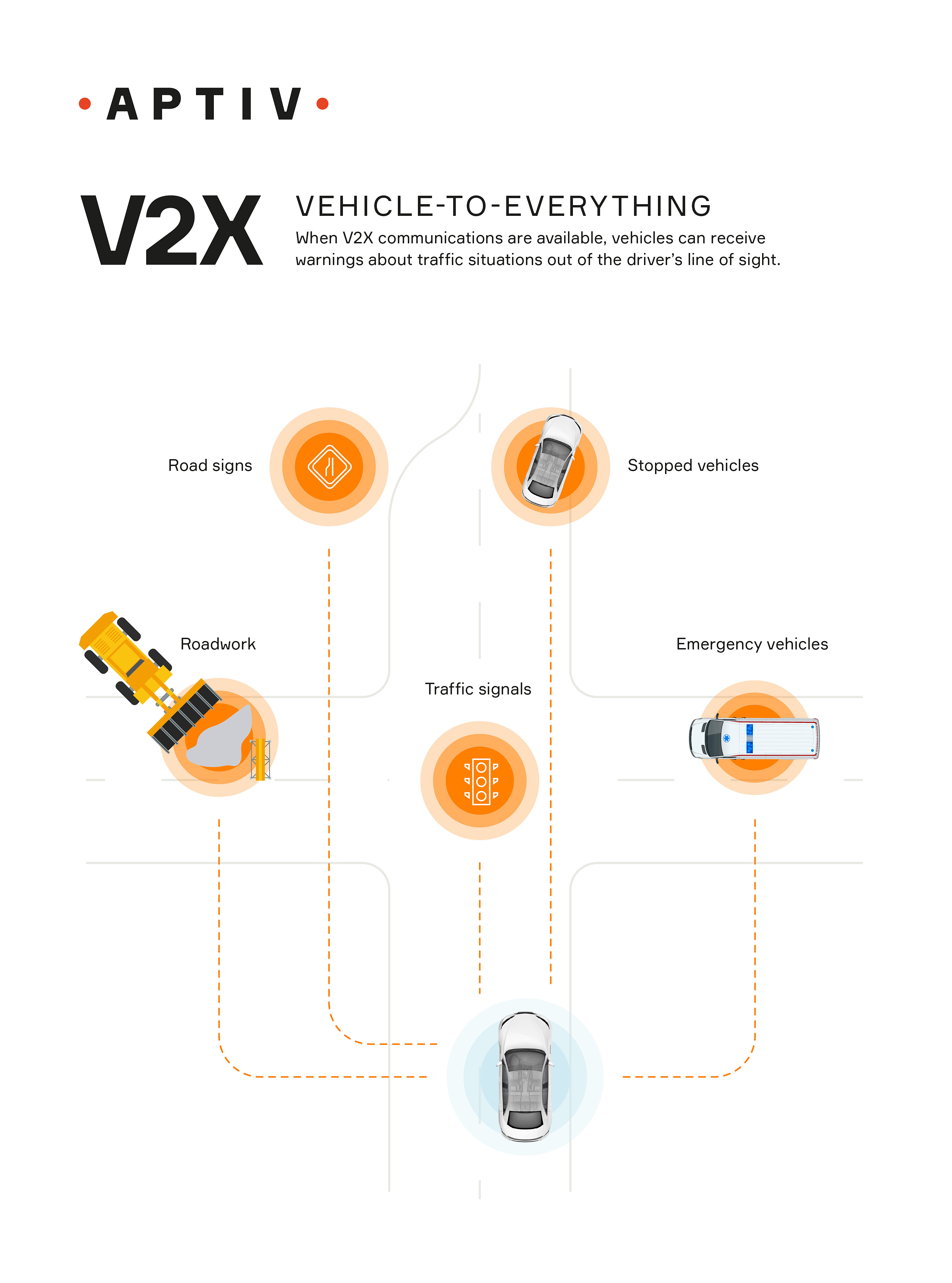What Is V2X?
The term “V2X” refers to vehicle-to-everything wireless communications. V2X systems are intended to improve the safety, comfort and convenience of vehicles by allowing them to communicate with virtually anything that can be instrumented. This increased situational awareness enables more intelligent and connected solutions.
V2X communication goes beyond active safety sensing and perception systems, available in many vehicles today, which support features such as lane keeping and collision avoidance based on data from radars, cameras, ultrasonic sensors and lidars.
In a V2X scenario, vehicles can receive wireless transmissions from other moving vehicles, from traffic signals, from weather reporting networks, and even from bicyclists and pedestrians to better understand and interact with the world around them.

Here are the different types of potential V2X wireless communications:
V2V: Vehicles equipped with vehicle-to-vehicle (V2V) technology would be able to identify the speed, location and direction of other vehicles within a proximity of about 300 meters, helping them avoid accidents through improved situational awareness at blind spots and intersections, in heavy traffic and in other scenarios where drivers might be unaware of impending danger because of obstructions, weather or terrain. Aptiv was the first to bring V2V to market with the 2017 Cadillac CTS.
V2I: Vehicle-to-infrastructure technology connects vehicles to everything from traffic signals to railroad crossings, and warns about conditions down the road, such as road construction or traffic jams. For example, otonomo uses V2I information to identify open parking spaces in parking garages and metered street parking, which means never hunting for a parking space. When traffic signals can communicate their states directly to vehicles, the vehicles can better plan their speed as they approach. Studies have indicated that this capability improves traffic flow and can reduce emissions by as much as 15% when V2X is widely deployed, and that is consistent with Aptiv’s experience from our V2I integration in Las Vegas.
V2N: Vehicle-to-network systems connect vehicles to cloud-based networks that provide services like real-time weather and traffic updates. V2N systems could use information on the driver’s route to make adjustments on the fly.
V2P: Vehicle-to-pedestrian technology enables direct communication between a vehicle and a pedestrian within close proximity. In this scenario, pedestrians would have an app on their smartphone that would communicate
with vehicles. Alerts can be bi-directional; the pedestrian’s app could send an audio alert to the driver, and the driver’s system could send a similar warning to the pedestrian’s phone, or both if a dangerous situation is sensed.
In other scenarios, a separate device could be mounted on, say, a handicapped person’s wheelchair or a cyclist’s road bike. Aptiv explored similar concepts to protect cyclists in a university partnership and demonstrated them at CES 2020.
The industry and regulatory bodies have wrestled with the question of which wireless technology to use for V2X – whether to use a variant of Wi-Fi called Dedicated Short Range Communications (DSRC) or cellular technology called C-V2X. As 5G cellular becomes more widely deployed, it opens the potential to greatly accelerate V2X.
